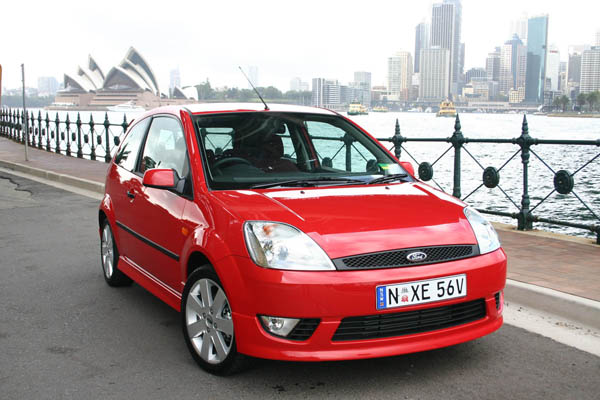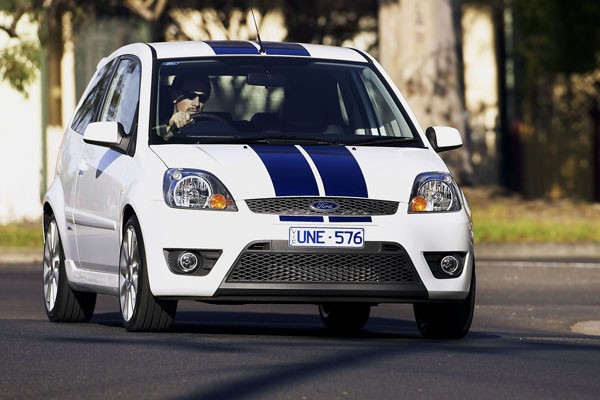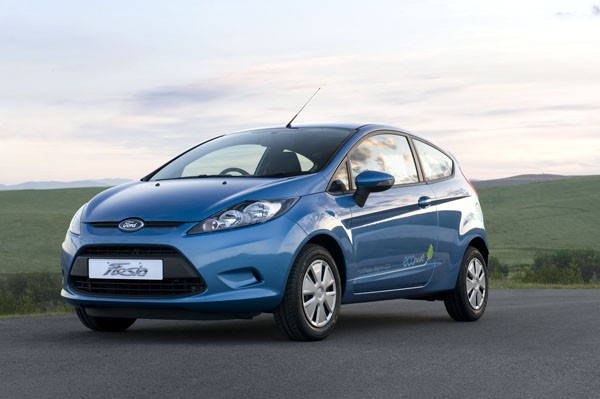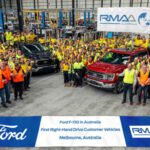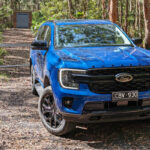Styling of the latest couple of generations of Ford Fiestas is bold and their stunning, almost futuristic, looks appeal to many, particularly those moving down from larger cars.
The Ford Fiesta is sold as a three-door or five-door hatchback. The three-door has a sporty appearance, but the five-door certainly isn’t on the staid side. Getting into the back seat of the three-door Fiesta isn’t too difficult for the kids, but large adults will find it a hassle.
Once in the back seat, occupants will find it reasonably spacious. The front seats are larger than average for a car in this class and are reasonably comfortable, though some may find them on the firm side in the German manner.
Ford Australia is keen to please drivers looking for more than mere transport so imports its small cars from Europe. This makes them slightly more expensive than products from Holden, which are often made in South Korean factories, but Ford Oz has managed to keep prices down.
The Fiesta comes in plenty of different variants. Most use a 1.4- or 1.6-litre petrol engine and offer a couple of drivetrain options. The WZ series Fiesta, introduced in August 2013, has an interesting pair of turbocharged power units, in particular a willing little three-cylinder 1.0-litre with plenty of spark in its response. Even better is the 1.6 turbo-petrol in the Fiesta ST, it has strong torque over a wide spread of revs and can be regarded as a low cost alternative to full-on hot hatches.
The Ford Fiesta XR4, introduced in June 2007, is a genuine hot hatch, not just a dressed up standard model. Inside, there are sporting seats with leather bolsters. Fiesta XR4 has lowered suspension and rides on Pirelli P-Zero tyres. Ride comfort is surprisingly good for the hot-hatch class.
The XR4’s big Duratec 2.0-litre engine gives plenty of performance in a light car such as this. Some will be disappointed that only a five-speed gearbox is used. However, it has nicely chosen ratios and the change action is slick and positive.
A fascinating new model was launched in November 2009. The Ford Fiesta Econetic is a super-economy model that’s powered by a 1.6-litre turbo-diesel engine tuned specifically for low consumption. It has good torque, uses higher than normal gearing and runs on special low-rolling resistance tyres. The result is fuel consumption below four litres per hundred kilometres during easy motorway running and only five to seven litres per hundred kilometres in day-to-day suburban driving.
A good home mechanic can do a fair bit of their own work on a Fiesta, but the underbonnet area is cramped. Leave the safety items to the experts.
There are plenty of Ford dealers Australia wide. While uncommon parts for Fiestas may not be held in all country dealerships it usually only takes a couple of business days to have parts freighted out there. We seldom hear any real complaints about prices of parts or servicing.
Plenty of mechanics running their own independent businesses will have had formal training while employed by Ford dealers in the past.
Insurance premiums for the standard Ford Fiesta models are about average for its class. Some companies may charge more for the XR4 hot-hatch and the hot-ish Fiesta ST, though not outrageously so.
WHAT TO LOOK FOR
European cars aren’t built to the high standards of Japanese ones, so be sure to arrange for a full professional inspection.
Carefully check the interior for signs of damage due to poor assembly, also for damage done by rough or bored kids.
Listen for squeaks or rattles when driving on rough roads, not necessarily outback tracks, just suburban surfaces that have seen better days.
The Fiesta engine should start easily and idle smoothly virtually from the moment it kicks over.
Listen and feel for a manual gearbox that hesitates or crunches during fast changes.
Try the steering on full lock at low speeds both all the way to the right and the left. Listen for the clicking sounds that indicate worn universal joints.
A Fiesta XR4 that has been driven hard can often be identified by uneven tyre wear. Also look for lowered suspension, big-diameter wheels and additional instruments.
Rust isn’t going to be a problem unless a car has been poorly repaired after a crash. Look for paint finish that doesn’t match from panel to panel and for overspray on non-painted areas.
HOW MUCH?
Expect to spend from $2000 to $4000 for a 2004 Ford Fiesta LX; $4000 to $7000 for a 2006 Zetec; $6500 to $10,000 for a 2007 XR4; $8000 to $12,000 for a 2009 Zetec; $10,000 to $15,000 for a 2011 Econetic or a 2011 Zetec; $12,000 to $18,000 for a 2013 Zetec; and $14,000 to $21,000 for a 2013 ST.
CAR BUYING TIP
A simple way to check for rust repairs is to hold a magnet against a suspect area. It will stick to metal under the paint, but not to plastic fillers.




